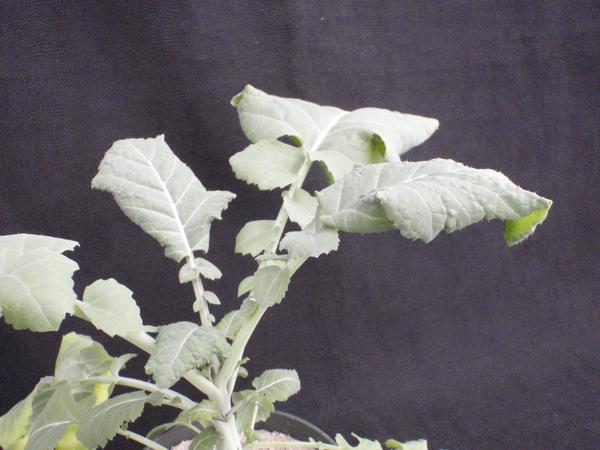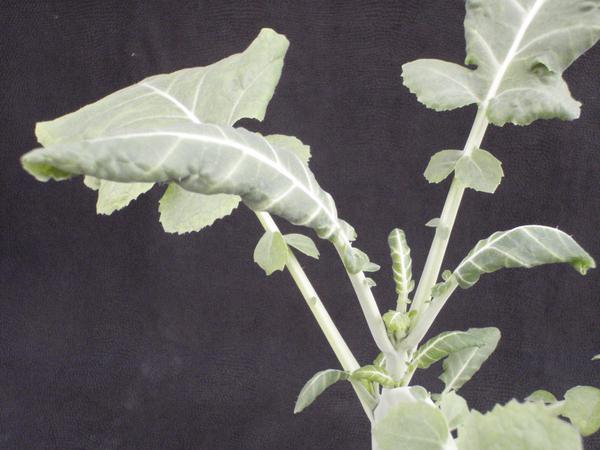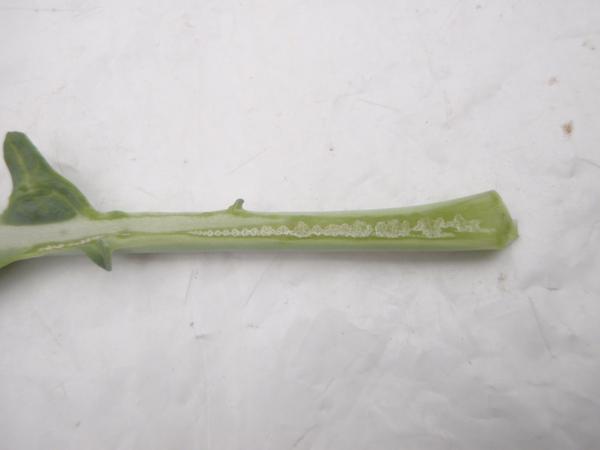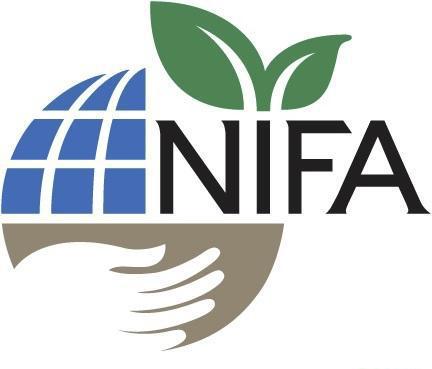From the Field - Agronomy Notes
In this Brassica carinata (Ethiopian mustard) research update, we highlight the symptoms of boron deficiency. These images are part of a project by the Southeast Partnership for Advanced Renewables from Carinata (SPARC) to develop a diagnostic series for the identification of nutrient disorders of Carinata. Carinata is an exciting new crop in the Southeast used for a wide variety of primary and secondary agricultural products including cover crops, feedstock, high protein meal, and jet fuel. It is similar in management to canola given both canola and carinata are winter annual Brassica oilseed crops. However, carinata oil is not edible.
Symptoms
Boron (B), while a micronutrient, is still needed by the plant even if in smaller quantities. Boron is necessary for cell elongation, so growth and expansion of new tissue at the growing tips of plants is affected. Boron is also essential for reproductive growth. Boron deficiency manifested quickly in carinata. Symptomatology first manifested on the new growth or upper foliage given that boron is an immobile element in carinata and other plants that use sucrose as the primary photosynthetic metabolite.
The first symptoms of boron scarcity in carinata manifested as a general stunting and distortion of newly expanding leaves and upper foliage (Figure 1). The upper foliage of the plant folded inward and downward creating a wilted leaf look, while new growth was distorted, creating a crinkled and wrinkled leaf. Petioles and midribs of upper foliage as well as new growth also developed signs of cracking (Figure 2).
In advanced B deficiency conditions, the leaf will distort severely at the margin resulting in an inward cupping of the leaf (Figure 3). If allowed to continue, B deficiency will result in the death of the growing tip (Figure 4). This will result in the growth of the axillary shoots and in carinata will cause excessive side shoot formation (Figure 5). If B continues to be limited, the axillary shoots will also become necrotic, and the plant will eventually die. To ensure proper diagnosis the above material should be used in conjunction with a leaf tissue sample and/or field test.
Key Contacts
Dr. Angela Post, Department of Crop and Soil Science – angela_post@ncsu.edu
Dr. Carl Crozier, Department of Crop and Soil Science – ccrozier@ncsu.edu
Key Contact South East:
Dr. Michael Mulvaney, UF/IFAS West Florida Research and Education Center– m.mulvaney@ufl.edu
Primary Authors: Paul Cockson, Dr. Carl Crozier, Dr. Ramon Leon, Dr. Michael Mulvaney, Dr. Angela Post, and Dr. Brian E. Whipker
Project Team: NC State Univ. personnel Paul Cockson (NC State B.S. student in Agroecology), Ingram McCall (Research Technician in Horticultural Science at NC State), Dr. Carl Crozier (Professor and Extension Specialist at NC State), Dr. Ramon Leon (Assistant Professor at NC State), Dr. Angela Post (Assistant Professor and Extension Specialist NC State), and Dr. Brian Whipker (Professor of Floriculture and Plant Nutrition in Horticultural Science at NC State). Univ. of Florida personnel Dr. Michael Mulvaney (Cropping Systems Specialist at UF/IFAS West Florida Research and Education Center.
Publication date: Jan. 1, 2021
N.C. Cooperative Extension prohibits discrimination and harassment regardless of age, color, disability, family and marital status, gender identity, national origin, political beliefs, race, religion, sex (including pregnancy), sexual orientation and veteran status.








